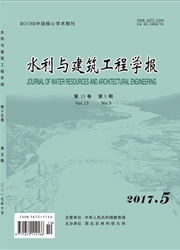

 中文摘要:
中文摘要:
在遗传算法中引入了位爬山法,有效地改善了遗传算法的局部优化能力,提高了优化速度与精度。采用此改进的遗传算法对基坑土体卸荷力学模型参数进行大范围识别,实现了参数空间内全局意义上的搜索。以200 kPa围压下土体真三轴卸荷试验为例,将试验结果与不同识别方法的结果进行了对比。分析了多样性测度、蠕变变异率和突变变异率对算法收敛精度的影响。得出如下结论:为了全面的了解基坑土体的特性,对不同位置的土体进行全面的试验研究是有必要的;利用改进的遗传算法进行参数识别,识别精度更高,能更好描述土体的力学性能,有利于基坑安全性分析与评估。
 英文摘要:
英文摘要:
By introducing the hill-climbing method into genetic algorithm,the local optimizing ability of the genetic algorithm has been improved,and its optimizing speed and accuracy has also been increased.By employing this improved genetic algorithm to identify the soil unloading mechanical model and its parameters within a wide range,the global search in parameter space is achieved.Taking the true triaxial unloading test on the soil under 200 kPa confining pressure as an example,the test results are compared with different parameter identification methods,and such affecting factors as diversity,mutation probability of creep and mutation probability of sudden change on the convergent precision of genetic algorithm are analyzed.It can be concluded that it is necessary to conduct overall study on the soil at different places to make comprehensive understanding for the properties of foundation pit soil,and that applying the improved genetic algorithm into parameter identification could help to improve the accuracy of identification and better illustrate the mechanical properties of the soil,which is favorable for the safety analysis and assessment of foundation pit.
 同期刊论文项目
同期刊论文项目
 同项目期刊论文
同项目期刊论文
 期刊信息
期刊信息
